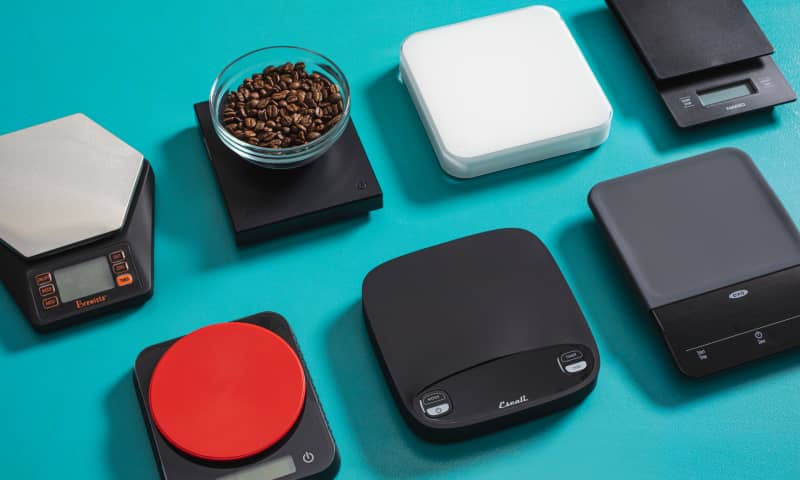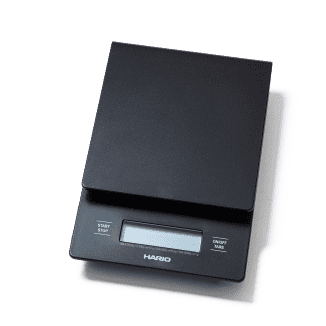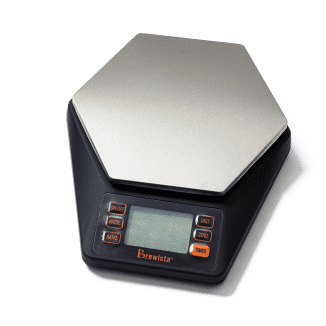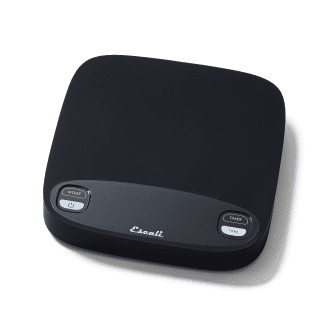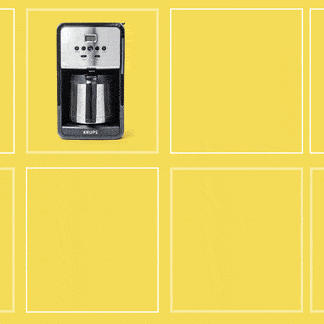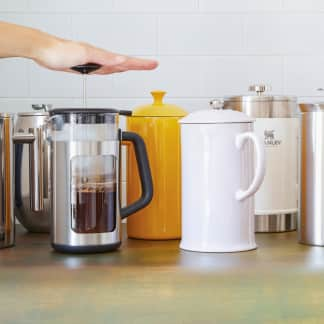When making pour-over coffee, exact measurements and timing are key. We recommend using a precision coffee scale with a built-in timer. Our favorite, the Timemore Black Mirror Basic Plus Scale, is accurate, it’s easy to use, and it has helpful additional features that ensure consistent, excellent pour-over coffee.
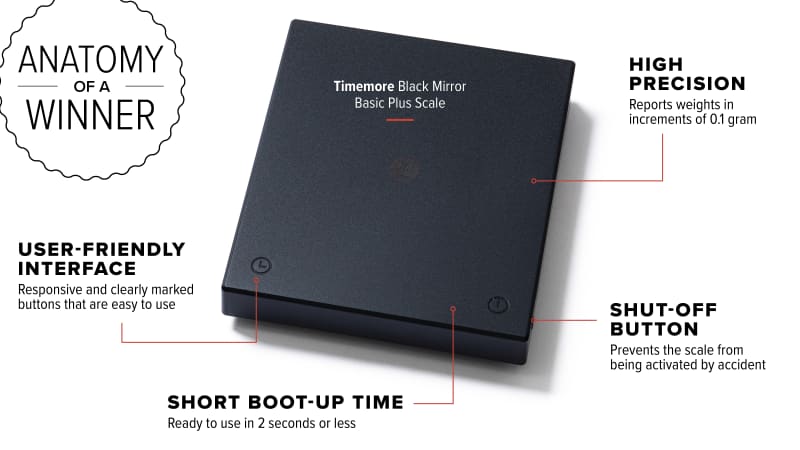
Compared to making coffee with a French press or an automatic drip machine, brewing pour-over coffee is a hands-on process. To pull the best flavor out of your coffee using the pour-over method, it's best to add a measured amount of water in careful "doses" at regular intervals. You start by “blooming” the coffee grounds, and then carefully pour more water over the grounds (or “coffee bed”) in two or three increments. You also have to watch the time. If hot water interacts with coffee grounds for too long, your coffee will taste overwhelmingly bitter. It requires finesse. If you’re a novice to pour-over coffee, you may find yourself pouring water too fast or too slow, resulting in over- and under-extracted coffee that tastes bad. The pour-over technique can be for espresso too.
Different coffee beans have different densities, depending on where they’re from and how they’re roasted. Therefore, using a tablespoon doesn’t give you accurate results.
Precision coffee scales can help improve the quality and consistency of your brew. We talked with coffee industry insiders, including the 2020 winner of the United States Barista Championship (USBC) Andrea Allen, and Cara Mitchell, retail training manager of the popular New York City chain Joe Coffee, about their experiences with precision coffee scales. Both think that precision coffee scales can help people improve their home coffee experiences significantly. “With a gram scale, you can nail your brew every single time,” Allen says. The built-in timers are also a plus as the process is more streamlined—you can start one device when making coffee instead of two. The scales give readings in at least 0.1-gram increments, which is more precise than a regular kitchen scale and ensures that you get the perfect ratio of coffee to water.

We gathered a group of precision coffee scales and evaluated their accuracy, speed, legibility, ease of use, durability, and ease of cleanup. We also tested one that’s integrated with a smartphone system that helps you track the flow rate, a niche feature for diehard coffee fans. Some models in our lineup have an auto mode, which automatically starts the timer when it detects the first drop of liquid. One can even calculate the water needed based on the weight of the coffee beans.
What to Look For
- High Precision, Sensitivity, and Speed: According to coffee experts, you’re unlikely to detect variation of 0.5 gram or less of ground coffee in a finished batch of brewed coffee, so we preferred coffee scales that were never off from the true weight by more than 0.5 gram. Because these slight variations would be important to some users, we rated the most accurate scales higher. We also liked models that read faster and that were more responsive to incremental additions of coffee grounds and water.
- Accuracy: The scales in our lineup showed varying degrees of accuracy when weighing lab-certified weights. According to coffee experts, you’re unlikely to detect variation of 0.5 gram or less in a finished batch of brewed coffee, so we preferred coffee scales that were never off from the true weight by more than 0.5 gram.
- User-Friendly Controls: We preferred easy-to-navigate, clearly-labeled interfaces. Two especially sleek and minimalistic scales had a pair of buttons labeled “start” and “tare” that performed additional functions depending on how many times we pressed each button and for how long, which confused us. One scale thoughtfully came with a removable plastic sheet that helped us commit everything to memory, and it quickly became intuitive to use.
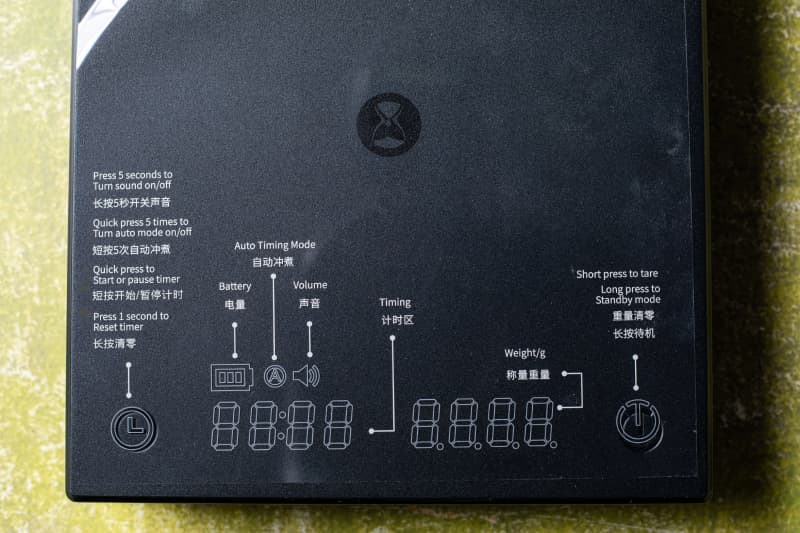
- Short Boot-Up Time: When you’re making pour-over coffee in the morning, you don’t want to wait around for your scale to turn on. The models we liked were ready to use in less than 2 seconds on average; the slowest took almost 5 seconds.
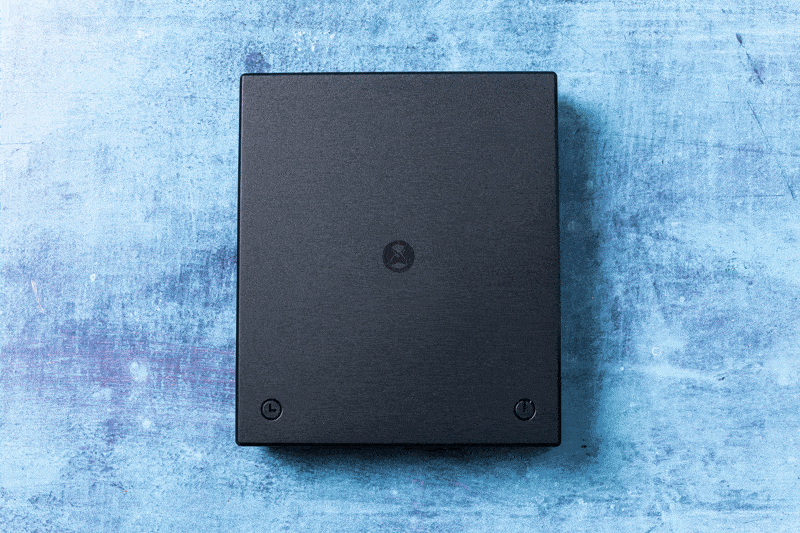
Nice to Have
- Heat-Resistant Silicone Mats: Many of the precision coffee scales came with removable silicone mats that sit on the weighing platform. The mats act as heat shields to prevent piping-hot coffee from damaging the scale’s delicate components. The silicone also helps keep glassware and ceramicware in place as the surfaces below the mats are often smooth and slippery.
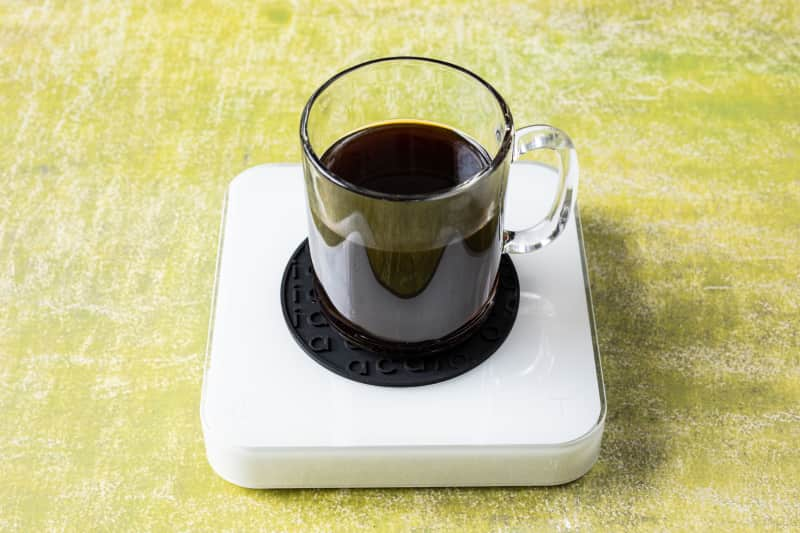
- Shut-Off Button: Some highly sensitive scales turned on when we accidentally touched them. We especially liked the models that included an energy-saving switch-off button that prevents the scales from being activated by accident.
What to Avoid
- Long Lag Times and Fluttering Numbers: We disliked scales that took too long to settle on a measurement. We also didn’t like models that displayed fluttering numbers, which were hard to read and distracting when adding ground coffee to the scale incrementally and when gradually pouring water for coffee.
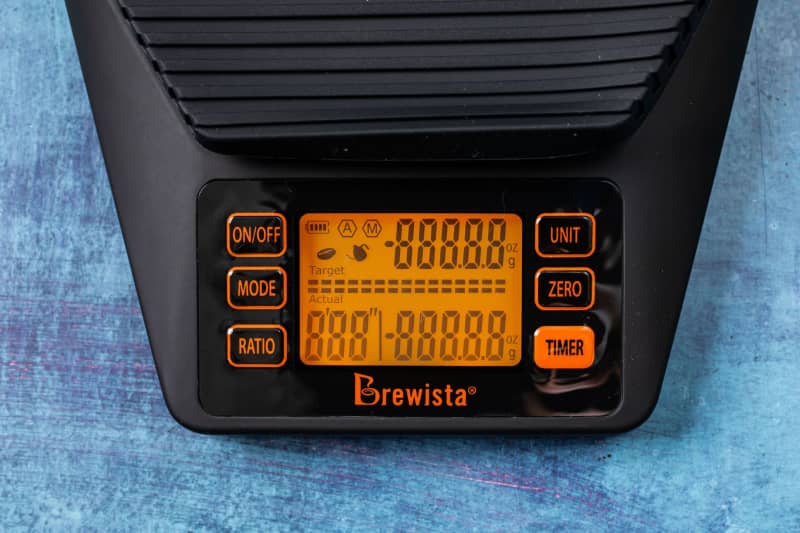
- Crowded Display Screens: Some of our lineup had display screens that were busy, making it too distracting and difficult to read the digits.
Other Considerations
- Auto Mode: Instead of requiring the user to manually turn on a timer, a scale’s auto mode setting starts the timer when the first drop of liquid is detected, allowing users to focus on pouring water. All scales in our lineup with auto mode were sensitive enough to start timing the moment water hit the coffee grounds; however, not all of the auto mode settings were easy to set up. They required us to remember different presets, making them a bit challenging to use. We liked ones with fewer commands to memorize.

- Bluetooth Connectivity: You can connect one of the scales in our lineup to your smartphone through an app. The app can calculate the amount of beans and water needed based on your desired ratio (the Specialty Coffee Association recommends a coffee-to-water ratio of 1:15 to 1:20). Moreover, you can save a record of the details of a batch of pour-over coffee, which includes the weights of the coffee and water used, the flow rate from the kettle to the coffee grinds, and the total brew time. (It can also be used when making espresso.) Comparing the details of different batches of pour-over coffee is useful for dedicated users who want to improve their skills. However, we think that most of the app features are frivolous, and the app itself is glitchy, freezing and needing to restart frequently. As this scale requires software updates once in a while, we’re hopeful that future updates will improve some of the usability issues we encountered.
The Tests
- Check accuracy of each model with six lab weights (from 0.5 gram to 500 gram), for a total of 48 tests per model. Repeat after dropping each model onto the counter from height of 2 inches above
- Evaluate overall functionality and ease of use when making pour-over coffee
- Confirm accuracy of timer against a clock
- Evaluate legibility of screen and buttons
- Assess durability by packing each model in a bag with soft and hard objects and swinging the bag five times, as if bringing the scale on a trip
- Evaluate additional features, such as Bluetooth connectivity, where applicable
How We Rated
- Accuracy: We calculated whether the scales were within 0.5 gram of an item’s true weight.
- Speed: We considered how quickly each scale can be turned on and report the weight of the item being weighed.
- Ease of Use: We considered whether the models were easy to use right out of the box or if they had complicated features or modes that we could only understand by consulting the manual.
- Legibility: We assessed the scales’ screens and considered whether they were brightly lit with large numbers that were easy to read from a short distance.
- Durability: We assessed the durability of the scales and noted whether they remained accurate and functional at the end of testing. We also noted whether they had heat-resistant silicone mats.
- Cleanup: We noted whether the scales were easy to clean or if they had features that allowed stray coffee grounds to accumulate.
